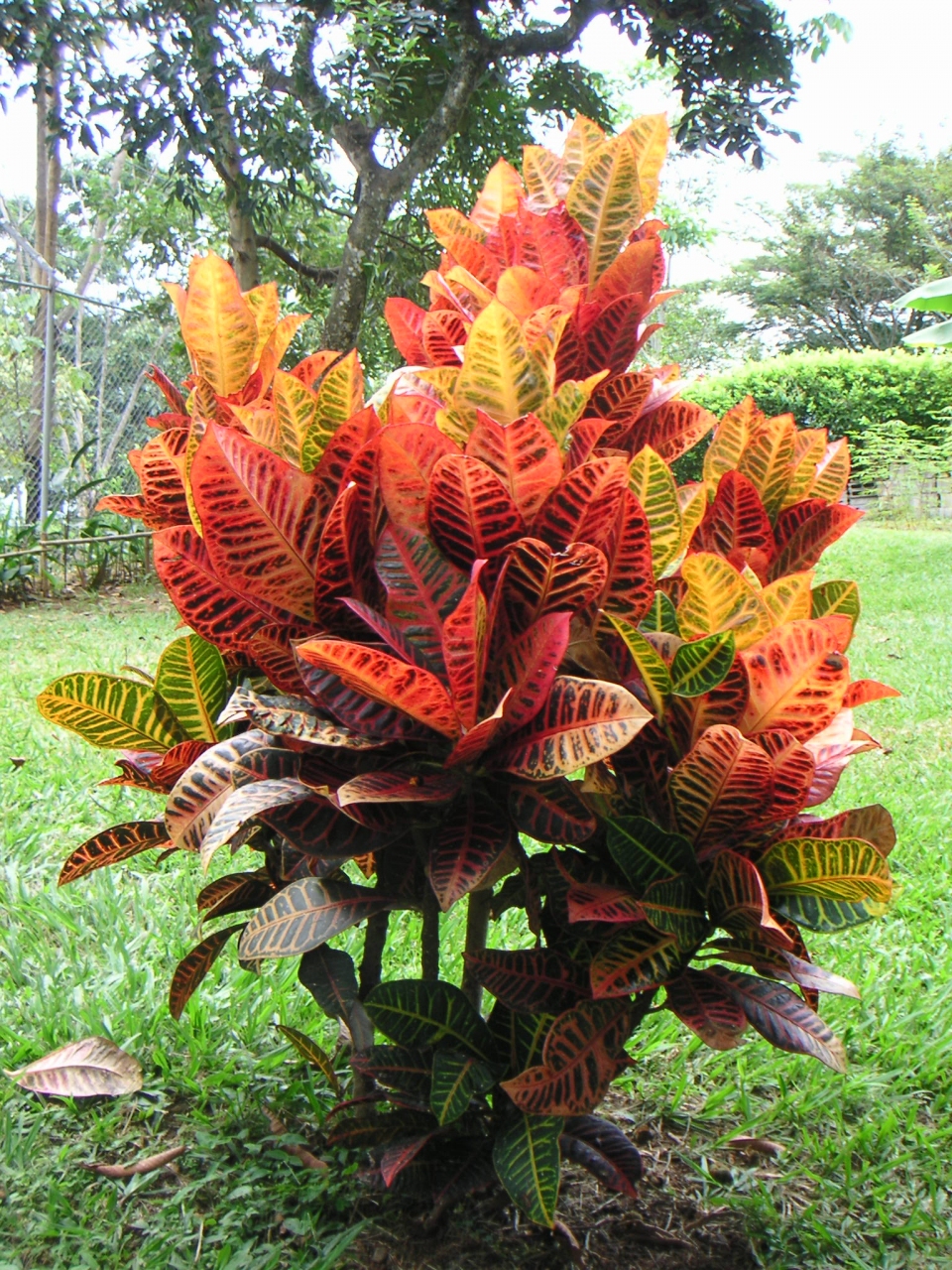Codiaeum variegatum (L.) Rumph. ex A.Juss.
Codiaeum variegatum is an evergreen shrub or a small tree branching from low down; it can grow up to 3 metres tall but is usually smaller in cultivation. The plant is sometimes harvested from the wild for local medicinal use. It is often grown as an ornamental in gardens, being especially valued for its vast range of variegated-leaf cultivars.
- Family: Euphorbiaceae
- Habit: Evergreen Shrub
- Habitat: Rain forest
- Status : Common
Vernacular names
English - Croton plant, Garden croton
Assamese - Pata-bahar
Other - Croton, Variegated Croton
Medicinal Uses
The leaves are abortifacient, antiamoebic, antibacterial, anticancer, antifungal, antioxidant, emmenagogue, purgative and sedative. A decoction of the crushed leaves is used in the treatment of diarrhoea. Chewing three leaves and then swallowing the juice is used to stimulate menstrual flow, to induce an abortion or to facilitate parturition. The leafsap is drunk and also applied topically to treat a snake bite. The sap of the leaves, combined with coconut milk, is used in the treatment of syphylitic lesions. The young leaves, combined with Pandanus macroieacceretia, coconut milk and the root sap of Areca catechu, is used in the treatment of gonorrhoea.
The green liquid from boiled leaves is used as a wash to ease fevers. The sap from the leaves or the bark is used to treat sores and fungal infections. A decoction of the root is used in the treatment of gastric ulcers. The root, combined with betel nut (Areca catechu) is chewed as a treatment for stomachache and to give temporary relief from toothache. Studies have shown the leaves and shoots to be rich in alkaloids (most abundant), cardiac glycosides, saponins, tannins, cardenolides, flavenoids, steroids and phyllates.
Phytochemical screening of six clone cultivars showed bioactive constituents that included alkaloids, anthraquinones, flavanoids, terpenes, steroid, phenol, saponins, tannins, phlobatannin and cardenolide, which suggests their use as antibacterial, antiamoebic and antifungal. In a study of 55 traditional medicinal plants in Cameroon, only the leaves extract of this species exhibited a clear antiamoebic activity that was more pronounced than the conventional treatment metronidazole. A study showed the latex to have a high molluscicidal activity against freshwater snails
